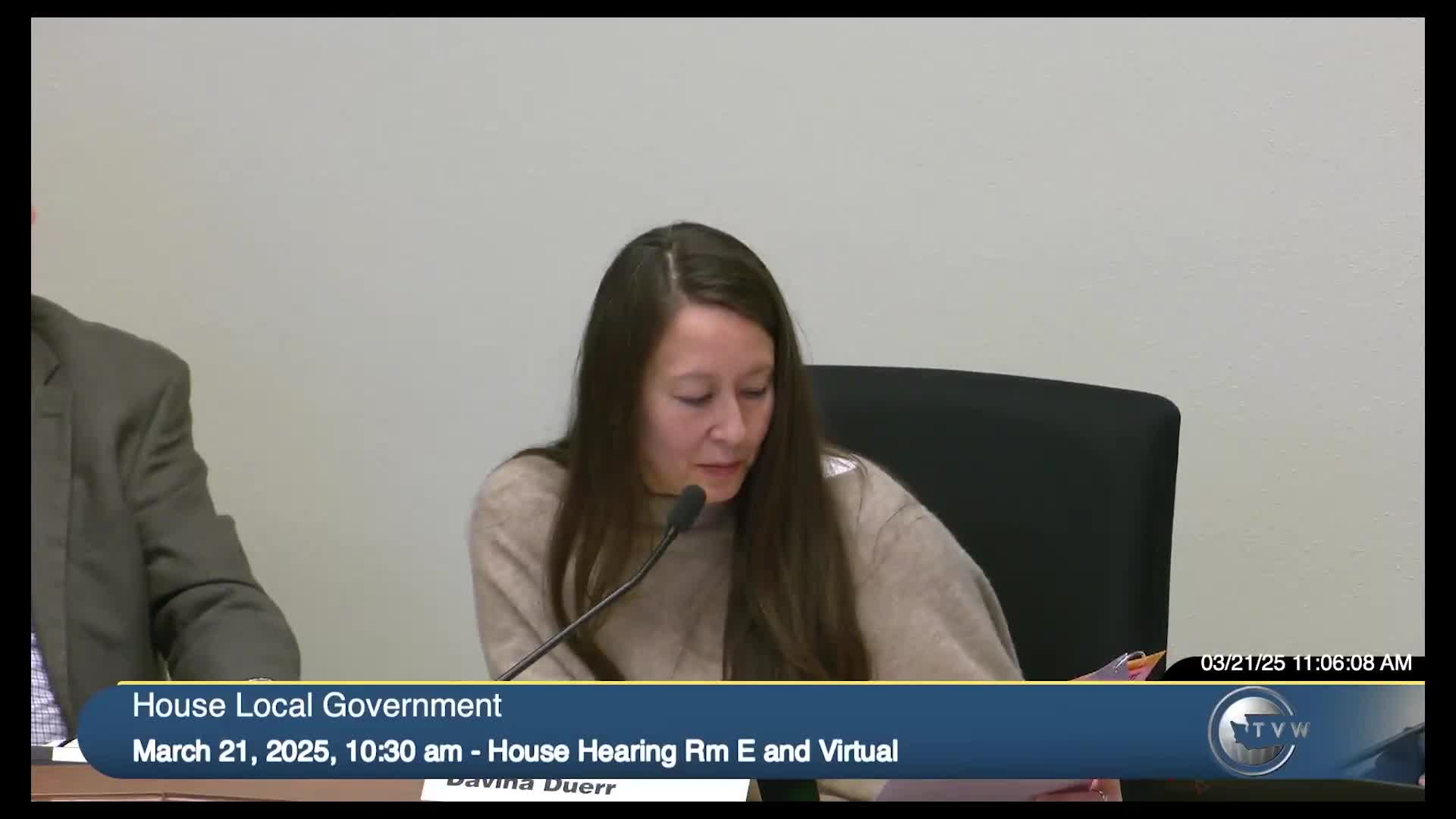Committee approves bills enhancing childcare access and extending GMA submission deadlines
March 21, 2025 | Local Government, House of Representatives, Legislative Sessions, Washington
This article was created by AI summarizing key points discussed. AI makes mistakes, so for full details and context, please refer to the video of the full meeting. Please report any errors so we can fix them. Report an error »

In a pivotal government meeting on March 21, 2025, the House Local Government Committee made significant strides in addressing childcare accessibility and housing regulations. The committee unanimously approved two key bills aimed at supporting working families and preserving historic integrity in construction.
The first highlight was the passage of Engrossed Substitute Senate Bill 5,509, which aims to increase access to childcare centers. Representative Hunt, a mother of two, passionately advocated for the bill, sharing her personal struggles in finding suitable childcare. "This bill will be really important in terms of making sure there's more opportunities for childcare centers in the communities that are so needed," she stated, emphasizing its potential impact on working families. The committee voted 6-0 in favor of the bill, underscoring a collective recognition of the urgent need for more childcare options.
Following this, the committee turned its attention to Senate Bill 5,571, which addresses building regulations for historic properties. An amendment was adopted to exempt historic buildings from certain requirements, allowing for the use of original materials. Representative Zahn praised the bill for balancing the need for preservation with the realities of construction costs, stating, "We don't want to put any more burden onto developers." This bill also passed with a unanimous vote of 6-0.
Lastly, the committee approved Substitute Senate Bill 5,558, which extends the timeline for counties to submit their comprehensive plans under the Growth Management Act. This extension, requested by local governments facing resource shortages, aims to provide them with the necessary time to complete their planning effectively. The bill received a 7-0 vote, reflecting a consensus on the importance of supporting local governments in their planning efforts.
These legislative actions signal a proactive approach by the House Local Government Committee to address pressing community needs, particularly in childcare and housing, while also ensuring the preservation of historical integrity in construction practices.
The first highlight was the passage of Engrossed Substitute Senate Bill 5,509, which aims to increase access to childcare centers. Representative Hunt, a mother of two, passionately advocated for the bill, sharing her personal struggles in finding suitable childcare. "This bill will be really important in terms of making sure there's more opportunities for childcare centers in the communities that are so needed," she stated, emphasizing its potential impact on working families. The committee voted 6-0 in favor of the bill, underscoring a collective recognition of the urgent need for more childcare options.
Following this, the committee turned its attention to Senate Bill 5,571, which addresses building regulations for historic properties. An amendment was adopted to exempt historic buildings from certain requirements, allowing for the use of original materials. Representative Zahn praised the bill for balancing the need for preservation with the realities of construction costs, stating, "We don't want to put any more burden onto developers." This bill also passed with a unanimous vote of 6-0.
Lastly, the committee approved Substitute Senate Bill 5,558, which extends the timeline for counties to submit their comprehensive plans under the Growth Management Act. This extension, requested by local governments facing resource shortages, aims to provide them with the necessary time to complete their planning effectively. The bill received a 7-0 vote, reflecting a consensus on the importance of supporting local governments in their planning efforts.
These legislative actions signal a proactive approach by the House Local Government Committee to address pressing community needs, particularly in childcare and housing, while also ensuring the preservation of historical integrity in construction practices.
View full meeting
This article is based on a recent meeting—watch the full video and explore the complete transcript for deeper insights into the discussion.
View full meeting
